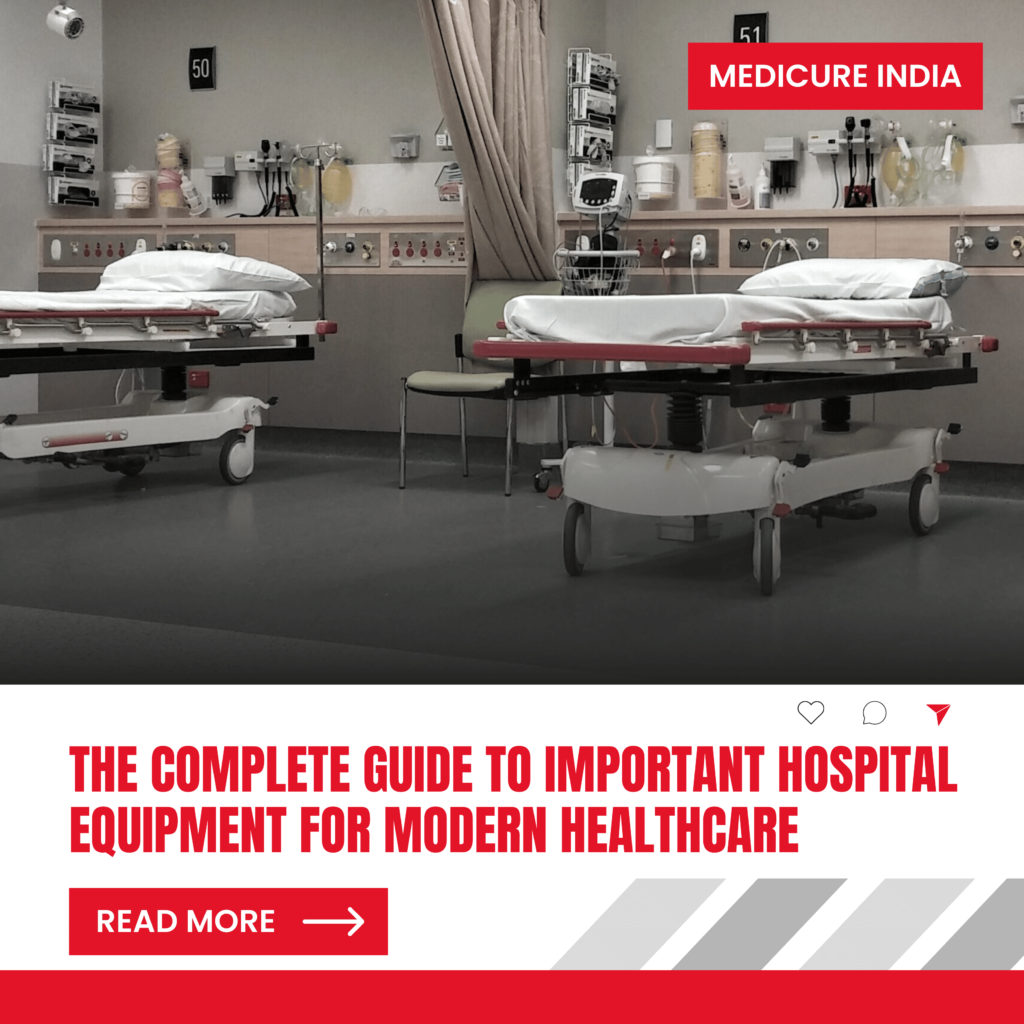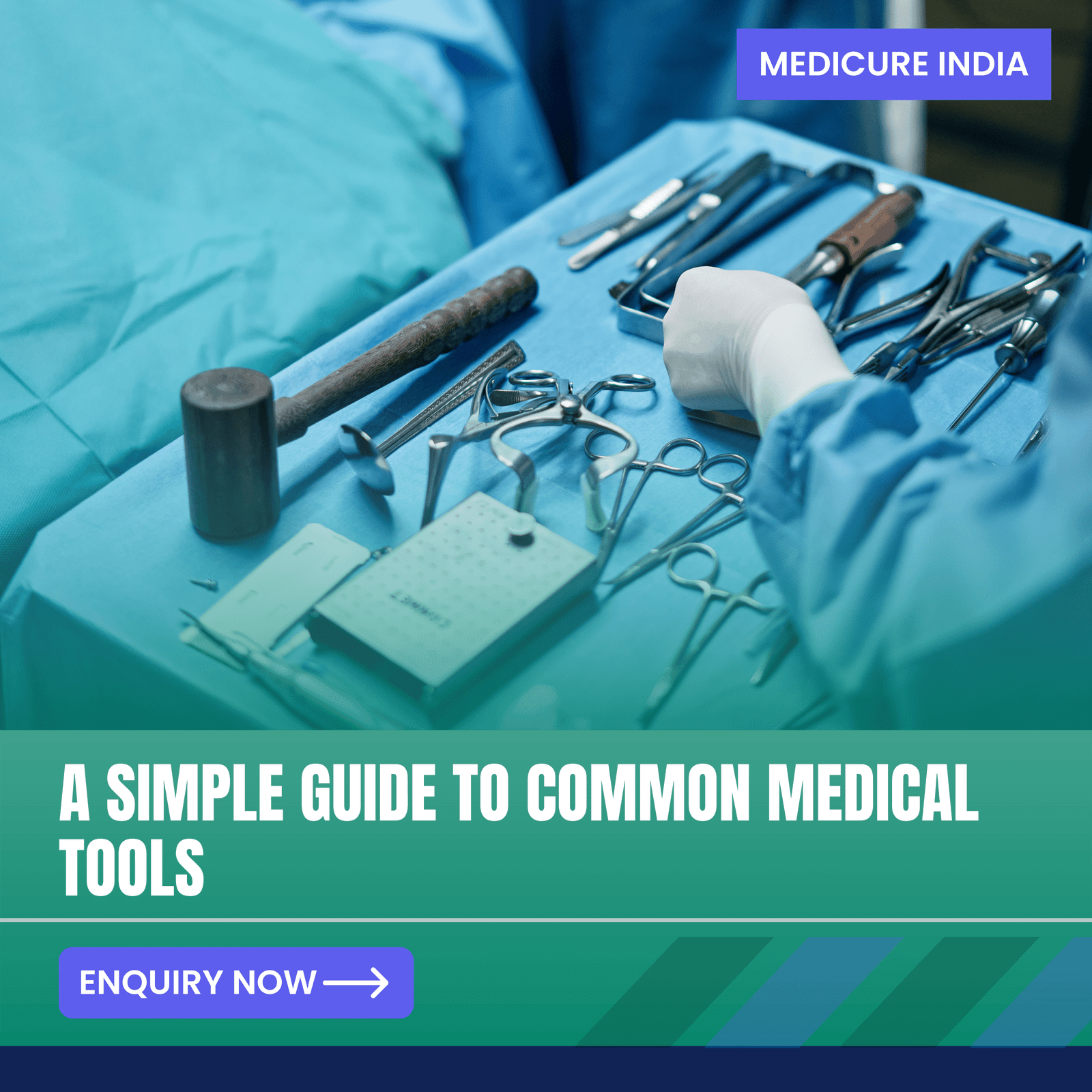The Complete Guide to Important Hospital Equipment for Modern Healthcare

Hospitals need special tools and machines to provide the best care for patients. These tools help doctors and nurses diagnose, treat, and monitor people, ensuring they receive the right care at the right time. In this guide, we will look at some of the most important hospital equipment and why they are so crucial.
1. Diagnostic Equipment
- Stethoscope: A stethoscope is a simple tool used by doctors to listen to sounds inside the body, such as the heartbeat and breathing. It helps detect problems with the heart and lungs.
- Thermometer: A thermometer measures body temperature. Hospitals use digital thermometers for quick and accurate readings, helping to detect fevers and infections.
- Blood Pressure Monitor: This tool measures a patient’s blood pressure. It’s essential for diagnosing high blood pressure (hypertension), which can cause serious heart problems if not treated.
- Electrocardiogram (ECG) Machine: The ECG machine measures the electrical activity of the heart. It helps doctors find heart problems like irregular heartbeats or heart attacks. This machine is often used in emergency rooms and intensive care units (ICUs).
2. Imaging Equipment
- X-ray Machine: X-rays take pictures of the inside of the body. They are used to find broken bones, infections, and other problems in bones and organs.
- Ultrasound Machine: An ultrasound uses sound waves to create images of organs and tissues. It’s commonly used during pregnancy and to diagnose conditions like kidney stones or liver issues.
- MRI and CT Scanners: MRI (Magnetic Resonance Imaging) and CT (Computed Tomography) scanners provide detailed images of the body. They help doctors detect tumors, injuries, and other complex conditions.
3. Treatment Equipment
- Defibrillator: A defibrillator delivers an electric shock to the heart to restore its normal rhythm during a cardiac arrest. This life-saving device is used in emergency situations.
- Ventilator: Ventilators help patients breathe when they are unable to do so on their own. These machines are essential in ICUs and during surgeries.
- Infusion Pump: An infusion pump gives a controlled amount of fluids or medication directly into a patient’s bloodstream. It is used in intensive care and during operations.
- Anesthesia Machine: Anesthesia machines deliver gasses that make patients sleep during surgery, ensuring they feel no pain while doctors operate.
4. Surgical Equipment
- Surgical Instruments: Surgical instruments include tools like scalpels, scissors, and forceps. They are used to make cuts, hold tissues, and close wounds during operations.
- Operating Table: Operating tables support patients during surgery. They can be adjusted to allow surgeons better access to the area they need to operate on.
- Surgical Lights: Bright lights are used in operating rooms to help doctors see clearly. These lights reduce shadows and focus on the area where the surgeon is working.

5. Monitoring Equipment
- Patient Monitors: Patient monitors continuously track important signs like heart rate, blood pressure, and oxygen levels. These are essential in operating rooms, ICUs, and during recovery.
- Pulse Oximeter: This device checks the oxygen levels in a patient’s blood. It’s clipped onto a finger and is commonly used during surgery and for patients with breathing problems.
- Cardiac Monitor: A cardiac monitor tracks the heart’s activity over time. It is vital for patients with heart issues to detect any abnormalities.
6. Hospital Furniture and Support Equipment
- Hospital Beds: Hospital beds can be adjusted for patient comfort and to help medical staff care for them. They often have wheels to make it easy to move patients.
- Wheelchairs and Stretcher: Wheelchairs and stretchers are used to move patients who cannot walk. They are common in all parts of the hospital, from emergency rooms to wards.
- IV Stands: IV stands hold bags of fluids or medications that are given to patients through a drip. These are common in every hospital room.
7. Sterilization and Sanitation Equipment
- Autoclave: An autoclave is used to sterilize medical tools with high-pressure steam. This ensures that the instruments are clean and safe to use during surgeries.
- Disinfectant Machines: Disinfectant machines, such as UV sterilizers, help keep hospital environments clean by killing harmful germs. They prevent the spread of infections.
Conclusion
Every hospital relies on these tools and machines to provide proper care to patients. From basic diagnostic tools to life-saving machines, each piece of equipment plays an important role in keeping patients healthy and safe. Keeping hospitals well-equipped with the right tools is key to ensuring high-quality healthcare for everyone.




